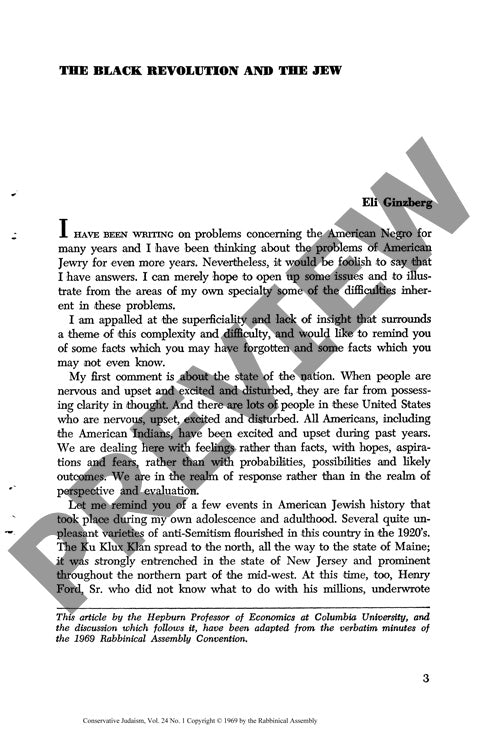The Black Revolution and the Jew
Couldn't load pickup availability
Abstract This article examines the complex relationship between Jewish Americans and the emerging Black Power movement during the late 1960s. Through historical analysis and socioeconomic examination, Ginzberg traces the parallel yet divergent experiences of both minority groups in American society. The methodology employs comparative historical analysis, examining Jewish economic advancement through education and employment opportunities from the 1920s-1960s, contrasted with the systemic barriers faced by African Americans. The study identifies three key objectives of the Black revolution: control of urban ghettos, preferential treatment in employment and education, and increased political representation. Ginzberg analyzes areas of contact and conflict between Jewish and Black communities, particularly in urban centers where both populations are concentrated. The research reveals that while some confrontation is inevitable due to competing interests in municipal employment, housing, and political power, the broader conflict represents typical American ethnic succession patterns rather than specifically anti-Semitic sentiment. The author argues that preferential treatment for African Americans, including quota systems, represents necessary corrective measures for centuries of discrimination. Key findings suggest that Black anti-Semitism, while present among some extremist leaders, does not characterize the broader African American community's attitudes. The study concludes that Jewish communities should distinguish between legitimate civil rights demands and extremist rhetoric, supporting corrective measures while opposing bigotry. This analysis provides crucial perspective on urban ethnic dynamics during a pivotal period in American civil rights history.

More Information
-
Physical Description
-
Publication Information
Published 1969
ISBN
-
Publication Credits
Eli Ginzberg

